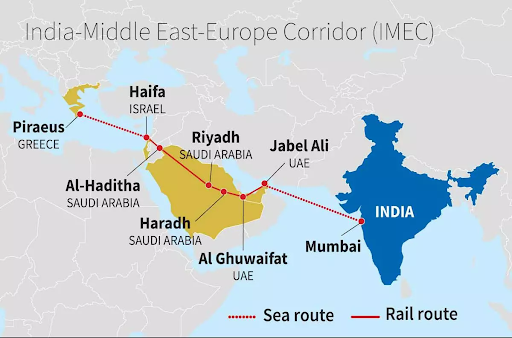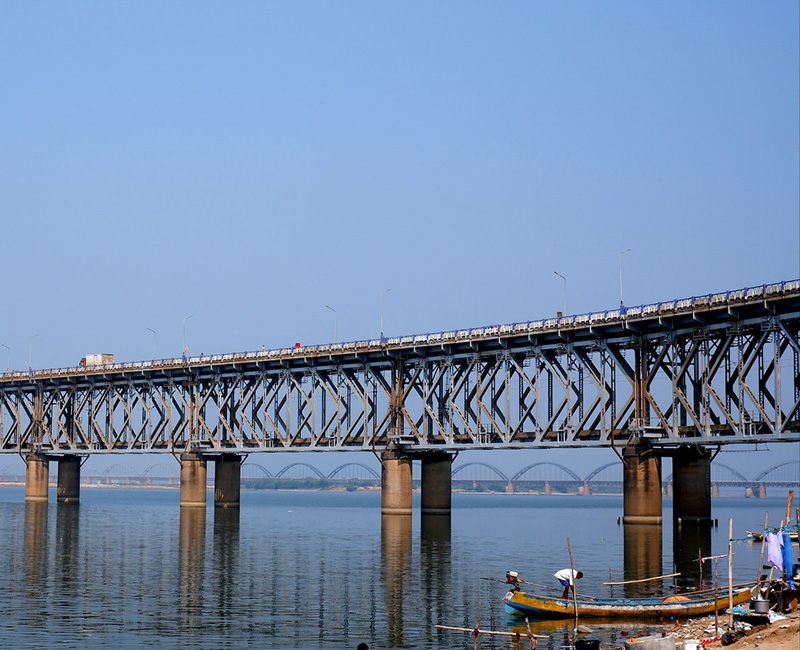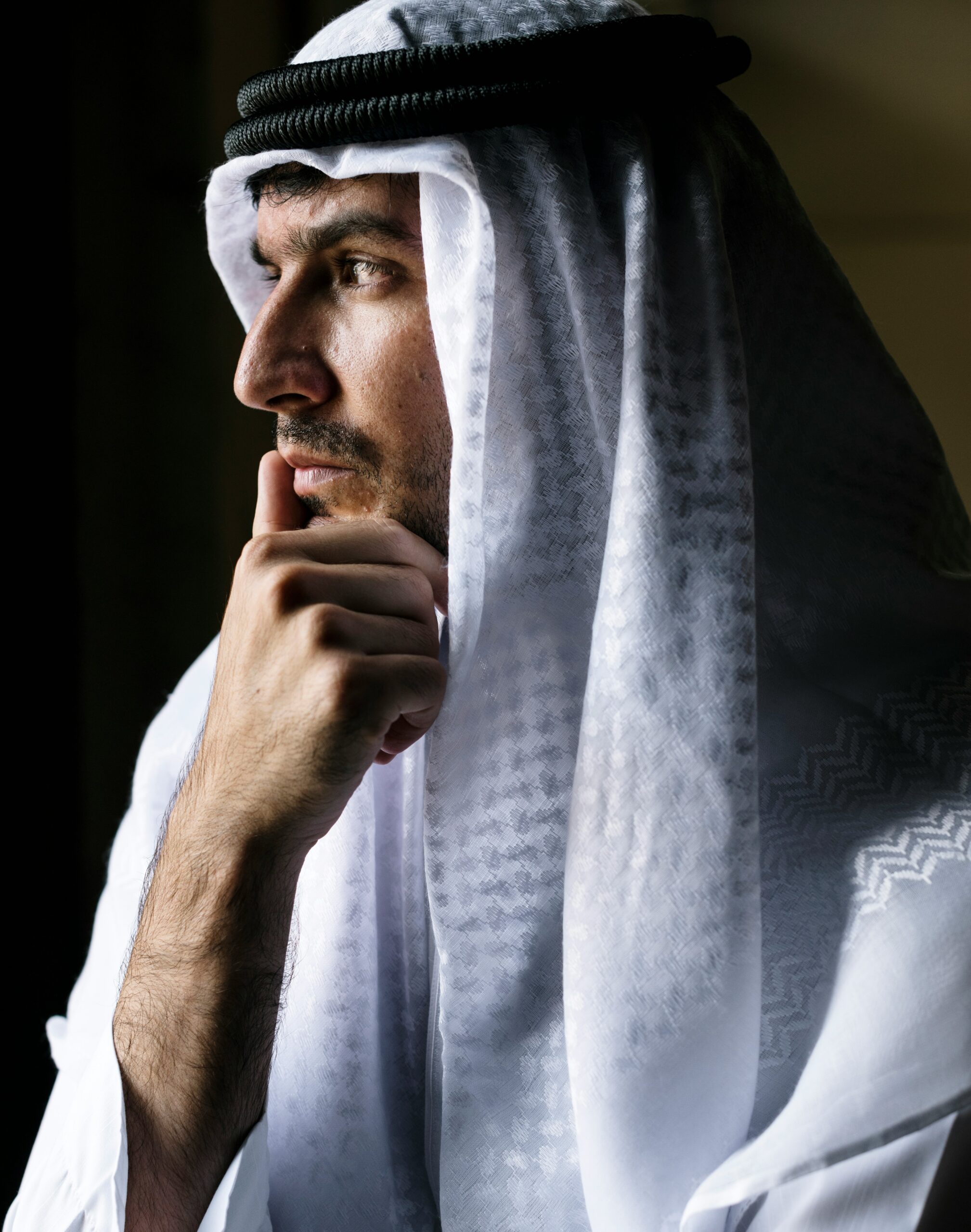What exactly is the proposed IMEC corridor? What are the preferred models, alternatives, favorable circumstances, and obstacles in the realization of this project?
The plan for a transcontinental economic corridor was made public on the sidelines of the recent G20 conference in New Delhi, India. The India-Middle East-Europe Corridor (IMEC) was established and signed by India, the United States, United Arab Emirates (UAE), Saudi Arabia, the European Union, Italy, France, and Germany. Ursula von der Leyen, president of the European Commission, referred to the corridor, an ambitious project that seeks to link South Asia, the Middle East, and Europe, as a “historic breakthrough.” The participating states formalized the economic corridor by signing the Memorandum of Understanding, which is expected to boost economic growth and integration, open up employment markets, accelerate trade and commerce, and encourage international cooperation.
The IMEC proposes two corridors: east and north. The 4800-kilometer rail and maritime project links India to the Gulf countries in the east and the Gulf nations to Europe from the north. The corridor aims to speed up trade between India and Europe through a shorter route and reducing the trade costs and time. At the initial stage the railway line is going to be constructed, and later digital and electric cables, fiber optics lines, and hydrogen pipelines are planned to be built. Once completed, the ambitious IMEC project will help the participating nations economically.
However, there can be certain difficulties with carrying out this mega corridor. Regarding the project’s financing and its mechanism, not much is known. Additionally, because not all participating states have the same political structure, there may be bureaucratic delays in the execution. There may be logistical difficulties for India too. During the course of the shipment from India to Israel via the GCC countries and finally to Europe, the goods would be loaded and unloaded numerous times. The price of the products could go up due to loading and unloading exercises. In addition to the logistical issues, the IMEC has also raised some concerns among other states.
The corridor by-passes Türkiye. Situated at the intersection of Southeast Europe and West Asia, Türkiye serves as a natural link between Europe and Asia. Despite being a NATO member and a major actor in the movement of cargo between Europe and Asia, Türkiye is not a part of this project. After two days following this agreement’s signing, Türkiye’s President Recep Tayyip Erdogan voiced his displeasure by claiming that the corridor would be incomplete without his country. India and Israel are connected through the corridor’s eastern route, which travels through the United Arab Emirates, Saudi Arabia, and Jordan. Israel’s inclusion renders Türkiye irrelevant to this corridor because it is geographically upward and does not lie on the route.

Source: https://www.civilsdaily.com/news/india-middle-east-europe-corridor/
Some analysts also believe that IMEC is an American initiative meant to balance out China’s Belt and Road Initiative (BRI). For states like Türkiye, Egypt, and Iran that have deeper relations to China, IMEC has been a source of concern. One of the reasons Türkiye has been excluded from the IMEC may also be due to some conflicts of Türkiye with neighboring countries including Greece. Through IMEC, it is possible to contest Türkiye’s strategic position and historic role as a trading hub between Asia and Europe. For Egypt, the Suez Canal is the country’s main source of income generation. The Canal would experience a loss in revenue due to a decline in traffic if the corridor is made operational.
Relying on its strategic location and significance as a commercial route connecting Asia and Europe, Türkiye has also stepped up its efforts on the “Development Road,” another trade corridor. This route, despite its smaller size as compared to IMEC, seeks to connect the Grand Faw Port in Basra, Iraq, with Türkiye by a 1200 km rail and parallel motorway as part of this commerce corridor. The project aims to transport oil and gas from the Persian Gulf to Türkiye and Europe in addition to moving products to Türkiye and ultimately Europe. Early this year in May, Iraq launched this $ 17 billion initiative and sought investment from Turkish firms as reported by Reuters1. During the recent visit of Türkiye’s Transport and Infrastructure Minister to Baghdad, the officials demonstrated their commitment to this corridor, and hinted at involving Qatar and UAE. Prior to it, the Turkish Foreign Minister made a statement referring to “intense negotiations” with Qatar and UAE regarding the project, according to local newspapers.
The announcement of IMEC came after ten years of Xi Jinping as president of the People’s Republic of China, who launched the expansive Belt and Road Initiative. BRI is a massive infrastructure project by China that involves developing roads, ports, rail networks, and energy pipelines as well as creating special economic zones all over the world. China hopes to open up new export markets, create new trade channels, generate economic gains, and increase its political and economic weight through BRI. The BRI initiative is currently signed by more than a hundred states from Asia, Europe, Africa, and Latin America. Chinese-led infrastructure projects under BRI have expanded China’s political and economic influence. Wary of the Chinese growing influence, three US presidents, Barack Obama, Donald Trump, and Joe Biden, have responded to China’s growing power by spending billions of dollars on aid, infrastructure development, and loans for developing nations. However, the IMEC is the biggest intervention of this kind. It is intriguing that some IMEC member states from the Gulf, like Saudi Arabia and the UAE, are also BRI members. This year, China made the most investments in construction projects in both countries. In addition to strengthening its economic relations with Middle Eastern nations, China’s political influence has grown significantly. Chinese-led diplomacy resulted in a rapprochement between two archrivals of the Middle East, i.e. Iran and Saudi Arabia. The world powers, especially the US, were taken aback by the agreement between the two governments. China has also offered to mediate the long-standing issue between Palestine and Israel. Therefore, by increasing its influence through the project, IMEC can also be seen as an attempt by the US to retake political ground in the Middle East.
IMEC provides a unique opportunity to India – located in South Asia – to take the lead in promoting economic co-operation and integration. Despite having a quarter of the world’s population, South Asia is a subregion of Asia that is the least integrated and plagued by wars, conflicts, and hostility between some of its states. The South Asian Association for Regional Cooperation, or SAARC, has been essentially dysfunctional for several decades and has not met the needs of its populace. India and Pakistan, the two largest states of South Aisa and nuclear powers, are at odds with one another and in a perpetual state of rivalry. While India appears to be in charge of IMEC, Pakistan has over time forged a close working relationship with Chinese military and political leaders. A component of the BRI is the multibillion-dollar China-Pakistan Economic Corridor (CPEC). The road system runs from Pakistan’s north to Pakistan’s Gwadar port, located in the Balochistan province’s southwest city. China built this deep-water port at the mouth of the Persian Gulf and outside the Straits of Hormuz. According to the Chairman of the Gwadar Port Authority, Gwadar “is close to the key shipping routes used by the mainline vessels in the region with connections to Africa, Asia, and Europe”2. The two rival South Asian nations are now a part of two global corridors, one led by China and the other supported by the US.
Do we live in a time of international corridor competition? Although it is believed that the global corridors would increase trade, foster better international cooperation, generate jobs, and benefit many governments and their populations economically, the corridors’ competition might spark geopolitical rivalries. The corridors can also assist the less-powerful states to gain political and economic clout, diversify their economies, and alter the dynamics of the world order through multipolarity.
1 https://www.reuters.com/world/iraq-launches-17bn-road-rail-project-link-asia-europe-2023-05-27/; Retrieved October 11, 2023
2 https://gwadarport.gov.pk/chairmanmessage.aspx; Retrieved October 11, 2023


